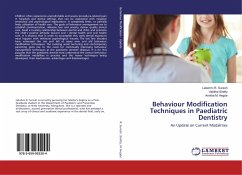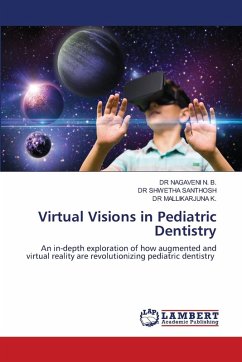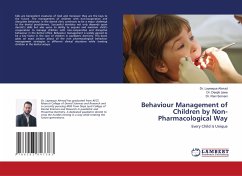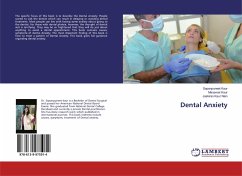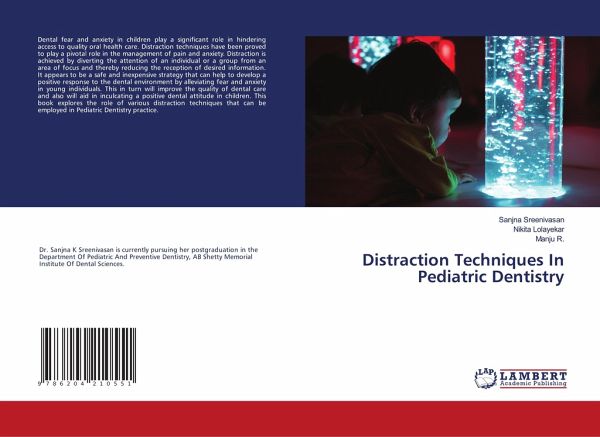
Distraction Techniques In Pediatric Dentistry
Versandkostenfrei!
Versandfertig in 6-10 Tagen
27,99 €
inkl. MwSt.

PAYBACK Punkte
14 °P sammeln!
Dental fear and anxiety in children play a significant role in hindering access to quality oral health care. Distraction techniques have been proved to play a pivotal role in the management of pain and anxiety. Distraction is achieved by diverting the attention of an individual or a group from an area of focus and thereby reducing the reception of desired information. It appears to be a safe and inexpensive strategy that can help to develop a positive response to the dental environment by alleviating fear and anxiety in young individuals. This in turn will improve the quality of dental care an...
Dental fear and anxiety in children play a significant role in hindering access to quality oral health care. Distraction techniques have been proved to play a pivotal role in the management of pain and anxiety. Distraction is achieved by diverting the attention of an individual or a group from an area of focus and thereby reducing the reception of desired information. It appears to be a safe and inexpensive strategy that can help to develop a positive response to the dental environment by alleviating fear and anxiety in young individuals. This in turn will improve the quality of dental care and also will aid in inculcating a positive dental attitude in children. This book explores the role of various distraction techniques that can be employed in Pediatric Dentistry practice.





